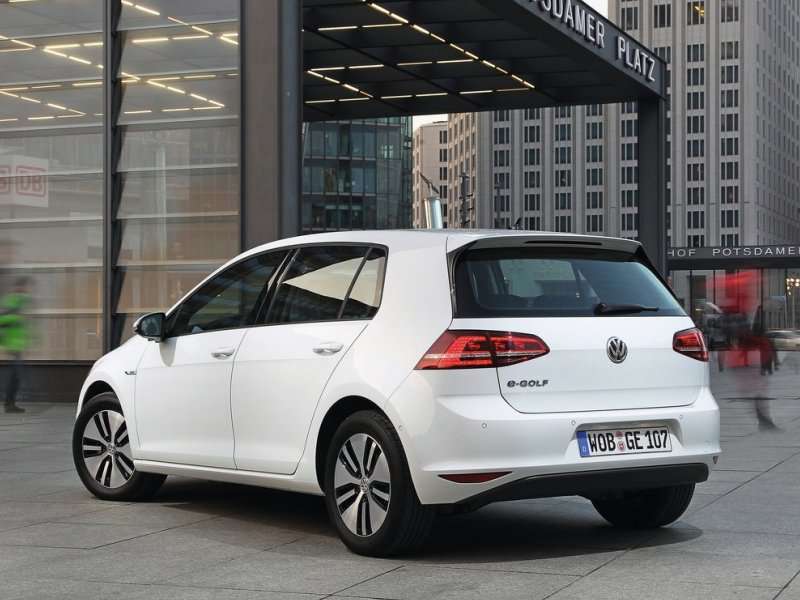Recent Articles
Popular Makes
Body Types
2015 Volkswagen e-Golf First Drive
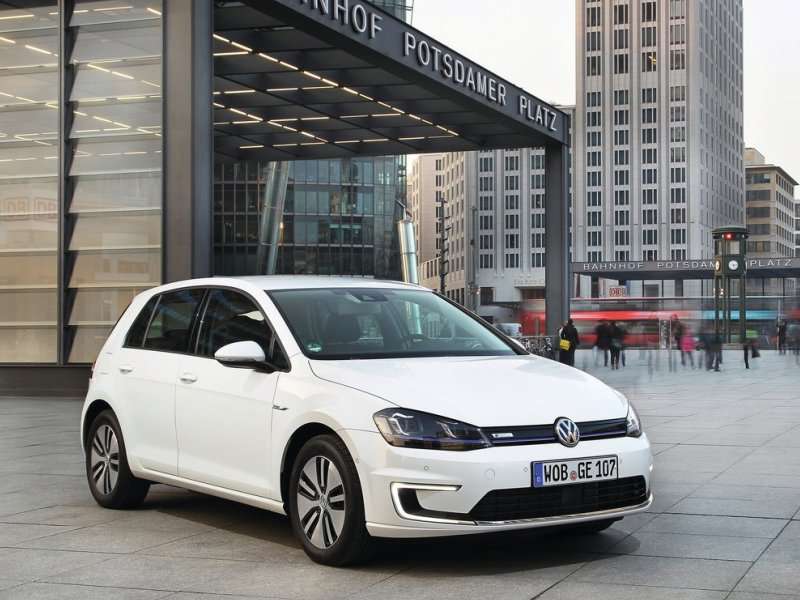
The Volkswagen Group has stated a goal of becoming the largest auto company in the world by 2018. To do this, the company is working on becoming the most attractive employer in the auto industry, generating a long–term return on sales of at least eight percent before taxes, increasing unit sales to over 10 million vehicles annually, and deploying intelligent innovations and technologies to become a world leader in customer satisfaction and quality.
Toward that last one, the company has introduced its first fully electric vehicle for the U.S. market. Based on the all-new seventh generation Golf platform, the Volkswagen e-Golf was designed from the beginning to be an electric model. Taking advantage of Volkswagen’s new Modular Transverse Matrix architecture (MQB), the electric powertrain and battery pack are seamlessly integrated into the car.
Thing is, others are not sitting idly by while VW makes determined strides toward dominating the automotive marketplace. The e-Golf now finds itself offered against a rather formidable array of competitors.
Will the electric Golf stack up?
Read on…
2015 Volkswagen e-Golf First Drive: Models & Pricing
Keeping in mind Volkswagen considers the Golf to be a premium product offering—positioned above Jetta in its lineup—the first iteration of the e-Golf comes fully loaded with the Golf family’s SEL trim package. This means you’ll find a touchscreen for navigation, audio, and telephony functions, as well as for VW’s Car-Net connected services.
Other standard features include keyless entry with push-button start, heated front seats, a leather-wrapped multi-function steering wheel, Bluetooth audio streaming and telephony, as well as a dual-zone automatic climate control system, a rear view camera, and a rear parking sensor array.
The 2015 Volkswagen e-Golf will come in around $35,000 before various state and federal government tax credits are applied.

2015 Volkswagen e-Golf First Drive: Design
Largely identical in overall appearance to the other members of the Golf family, the e-Golf model does have some readily distinguishable design elements setting it apart from its internal combustion engined siblings. The most striking is the C-shaped LED daytime running lights positioned at the lower corners of the front fascia of the car. WE are told this will be a common design element of Volkswagen’s electric models going forward.
(Which intimates e-Golf is just the first step in the electrification of VW’s product line.)
In addition to the daytime running lights, the headlights are also LED, marking the first time an American Volkswagen model is so equipped. These lighting instruments are favored for this application because they generate more illumination while consuming less power.
The grille of the e-Golf is pretty much enclosed,to improve aerodynamics. A shutter behind the grille enables it to be closed off to further improve aerodynamics at speed. A blue trim stripe runs through the bottom of the headlight housings and through the grille. The VW logo in the grille is also trimmed in blue.
From the rear, the e-Golf is identifiable by its lack of exhaust outlets (electric cars don’t need them—remember?). There's a tail spoiler to help clean up airflow and reduce wind resistance. If you look closely, you’ll also note air vanes at the trailing edges of the C pillars, employed for the same purpose. The e-Golf gets a specific wheel set, and an underbody tray is fitted to help air slip around the car more efficiently as well.
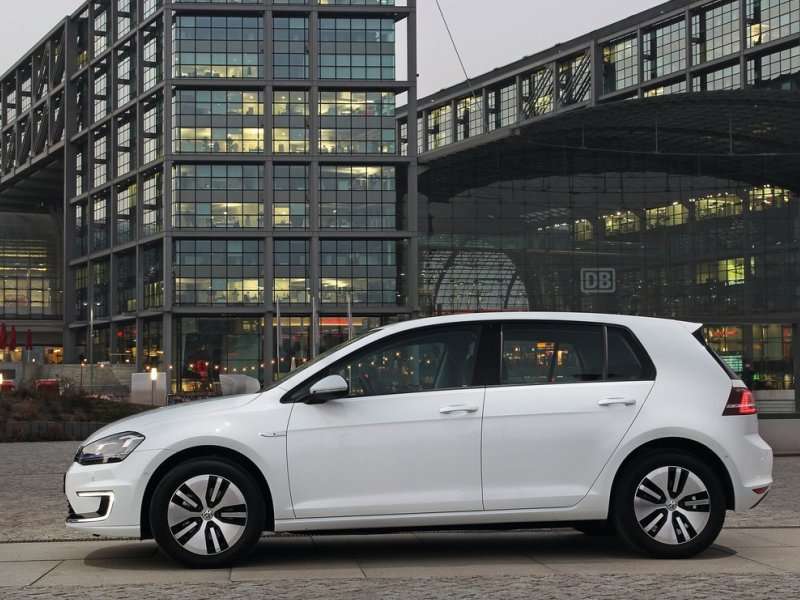
2015 Volkswagen e-Golf First Drive: Features & Controls
At first glance, the instrument panel appears rather conventional, until you take note of the power display gauge, which lives where the tachometer resides in internal combustion powered Golf models. This meter indicates the motor’s readiness to drive; whether power is being consumed or generated; the level of power output; and the degree of regenerative braking in progress.
The speedometer incorporates a gauge showing the state of charge of the battery pack. Positioned between the speedometer and the power display gauge is a color display offering information regarding the driving range, the current level of regenerative braking, the remaining charging time, and the type of charging connection.
Features of the touchscreen specific to the e-Golf include a range monitor, which also informs the driver how much power items like the heater and air conditioner are drawing so the driver can determine the amount of additional range to be gained by switching them off. The touchscreen also features an energy flow indicator, along with the e-manager interface for programming up to three departure and charging times.
The flow indicator informs the driver whether electricity is being consumed or generated, while the e-manager can activate the climate control system to ensure the cabin is comfortable at the pre-selected departure time. It can also be used to ensure the battery is fully charged.
The e-Golf’s VW Car-Net e-Remote smartphone application enables the owner to activate the climate control system and set a desired temperature, dictate the charging parameters of the battery pack, access key statistics regarding the vehicle’s charge characteristics, and determine if the doors and rear hatch are locked. It can also tell if the lights are on (or off), if the charging cable attached, and it can determine the car’s location.
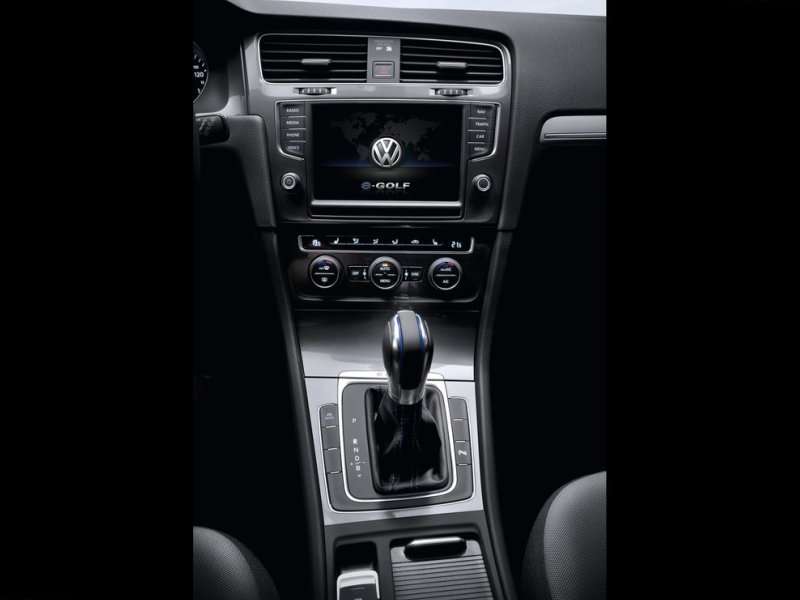
2015 Volkswagen e-Golf First Drive: Comfort & Cargo
As we mentioned earlier, the e-Golf was considered during the development stages of the Mk VII Golf, so its powertrain presents no challenges to the comfort or cargo capacity of the car. The battery pack is installed under the front and rear seats and in the utility tunnel running the length of the car’s floorpan. In fact, the e-Golf offers enhanced comfort—as the lack of engine noise makes the interior a considerably more relaxed environment. Very specific steps were taken to ensure this is the case.
The electric motor’s housing was designed to suppress noise, sound absorbent materials were employed throughout the interior to maintain quiet, and the design of the subframe was specifically engineered to reduce noise.
Seating, driving position, and pedal arrangement are all first rate. This is a car meant to carry passengers over long distances, and this is readily apparent. The steering column is adjustable for reach and tilt, and the seats offer sufficient adjustment to enable a broad variety of body types to occupy the e-Golf in complete comfort.
Presented in the five-door body configuration only, the e-Golf offers all of the convenience and functionality of the standard Golf models.
In other words, you can comfortably expect the e-Golf to offer more or less the same 22.8 cubic feet of cargo capacity with the rear seats deployed, and 52.7 cubic feet with the rear seats folded.
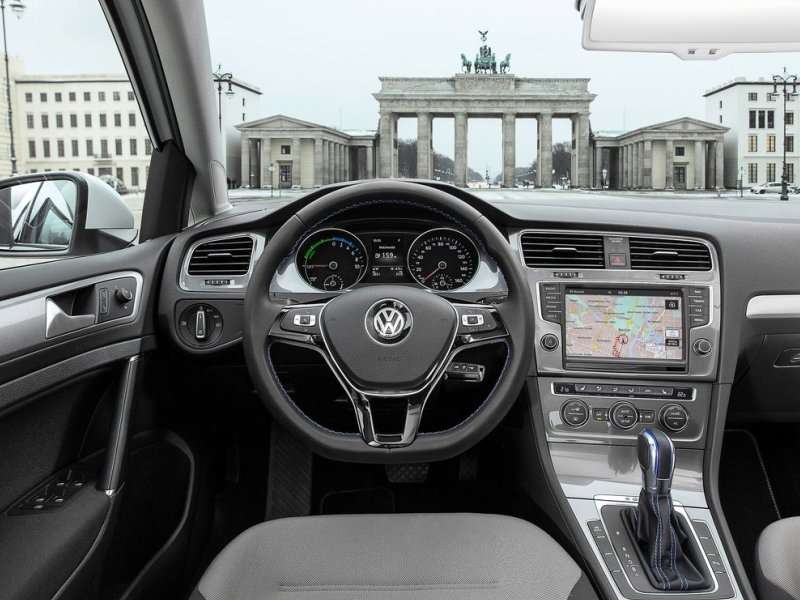
2015 Volkswagen e-Golf First Drive: Safety & Ratings
Crash test results have yet to be announced; but the usual array of safety kit is fitted. These include ABS, traction control, stability control, and a full complement of airbags. The new Automatic Post-Collision Braking System is incorporated to make the sure the e-Golf stops after a collision to reduce the likelihood of a secondary impact.
Pedestrian safety is considered by dint of an external low-speed sound warning device.
To mitigate range anxiety, VW’s Roadside Assistance Plan provides e-Golf owners with free transportation if the car runs out of charge within 100 miles of their home. The company will pay for a taxi ride home or to work and the car will be transported to the charging center nearest its location.
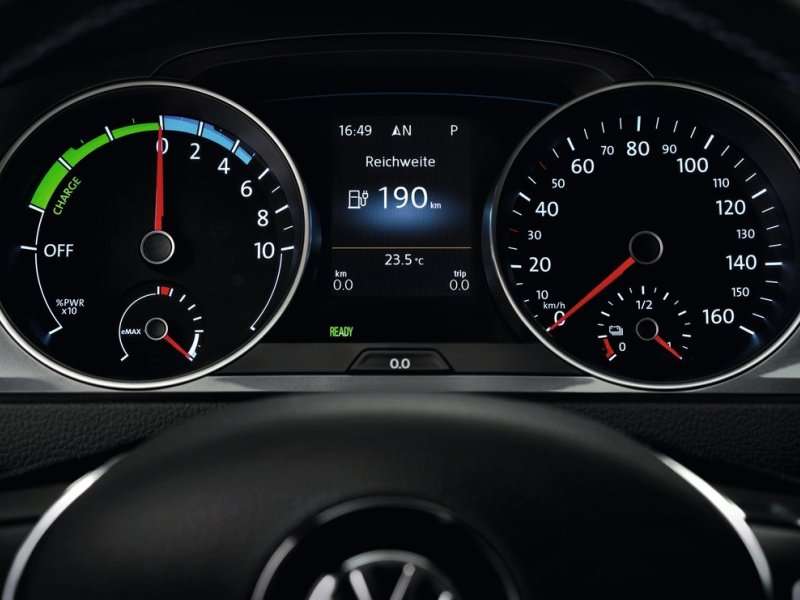
2015 Volkswagen e-Golf First Drive: Powertrain
Demonstrating its commitment to leadership, the Volkswagen Group developed the e-Golf’s powertrain and battery pack in-house.
A 115-horsepower motor capable of generating 199 ft-lbs of torque routes its power to the e-Golf’s front wheels through a single speed transmission integrated into the motor. Range is quoted at 70 to 90 miles. Top speed is limited to 87 miles per hour.
The 264-cell 24.2 kWh lithium-ion battery pack weighs 701 pounds and can be completely recharged from depletion in less than four hours—using the onboard 7.2 kW charger and a 240V AC electrical source. Charging using a standard 120V AC source takes 20 hours. A DC fast charge station can get the battery pack to 80 percent of its full charge from depletion in approximately 30 minutes.
Three driving modes are provided; Normal, Eco, and Eco+. In the Eco mode, power output is restricted to 94 horsepower and top speed is limited to 72 miles per hour to conserve energy. In the Eco+ mode, power output is restricted to 74 horsepower and top speed is limited to 56 miles per hour. Regardless of the mode selected, if the driver floors the accelerator pedal, the electric Volkswagen defaults back Normal mode.
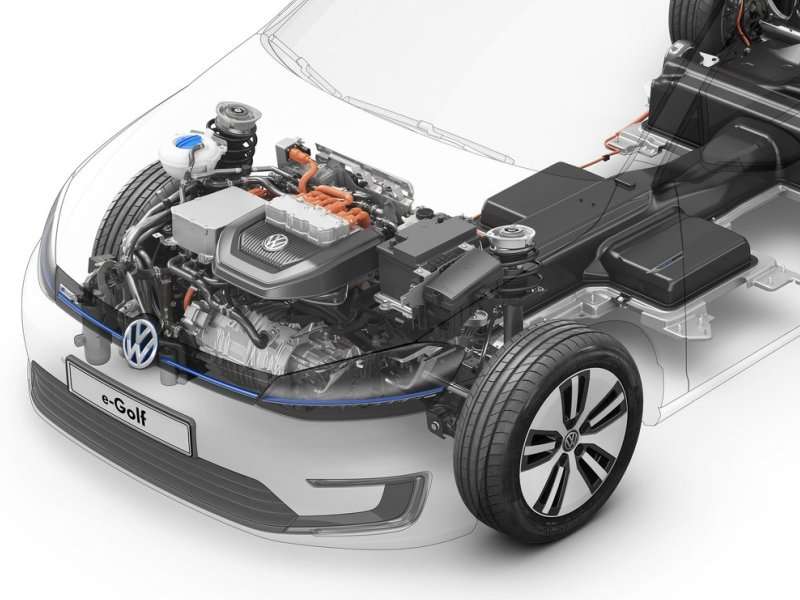
2015 Volkswagen e-Golf First Drive: Driving Impressions
Like the best electric cars we’ve driven lately, the most remarkable thing about driving the VW e-Golf is how unremarkable the experience is. Once you get used to starting the car without hearing an internal combustion engine settle into idle, you’ll likely never miss it.
Smooth, quick, and quiet, the e-Golf steps off smartly under acceleration. With all of its 199 ft-lbs of torque available right at accelerator pedal tip-in, there’s no hesitation, the e-Golf just goes. As we mentioned before, zero to 60 is quoted at 10.4 seconds, but honestly, the car feels much quicker than that. While we didn’t do any formal timing, we absolutely found the car’s acceleration to be quite noteworthy. Further, the e-Golf gives you the impression it will keep up with anything in its class, regardless of propulsion system.
On the move, the vehicle feels very well planted, both on surface streets and at highway speeds. Further, it corners with a bit more confidence than the petroleum powered Golf models. This, in all probability is owed the lower center of gravity the electric model enjoys because of the 701 pounds of battery beneath its floor.
Steering and braking are laudable, just as we’ve come to expect from contemporary VW products. We particularly like the way the multi-mode regenerative system can be used to simulate engine braking. Pulling the paddles behind the steering wheel can vary the aggressiveness of the regenerative system when the accelerator pedal is released—allowing the driver to preselect the amount of resistance encountered.
Long story short, if you've driven the VW Golf, you’ve driven the Volkswagen e-Golf—regardless of its power source. In other words, this electric version feels basically like every other Golf we’ve ever driven, with the advantage of near silent operation. It’s a fun to drive car you can feel good about.
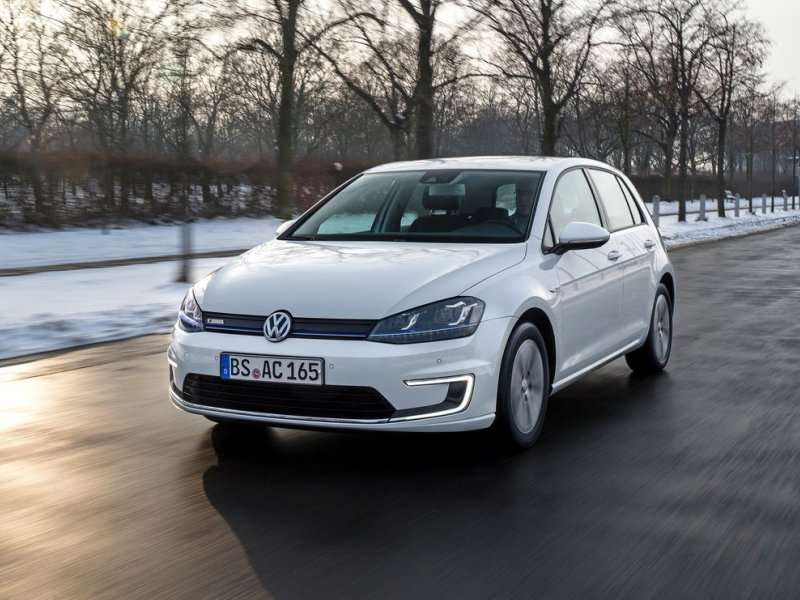
2015 Volkswagen e-Golf First Drive: Final Thoughts
From what we could discern, based on our admittedly short drive in Volkswagen’s first electric model for America, the only real drawback to the car would seem to be its price. At $35,000, it’s a bit dear for a Golf. Particularly when you consider the luxurious Volkswagen CC starts at $32,495. On the other hand, electric vehicles do command a premium, and at this stage of the game, their manufacturers still lose money on them.
The good news for electric car buyers is that they should find several incentives to offset the purchase price in the states the e-Golf is offered.
So given all the effort Volkswagen has gone to regarding the e-Golf, and given the new MQB architecture the company has developed took electric vehicles into consideration, you can bet this is just the beginning of the electrification of Volkswagen Group products.
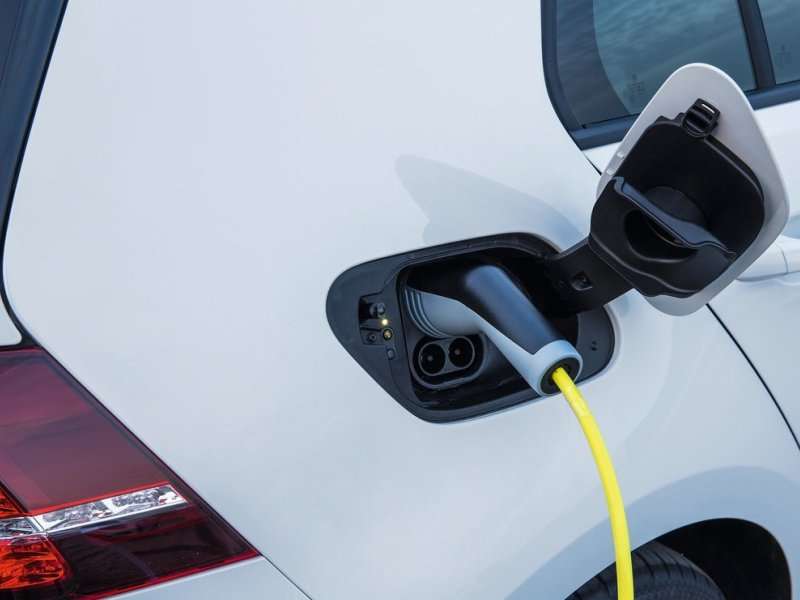
2015 Volkswagen e-Golf First Drive: Pros & Cons
Seamless operation, zero tailpipe emissions, no gas station visits—ever
Slightly higher price, limited range
